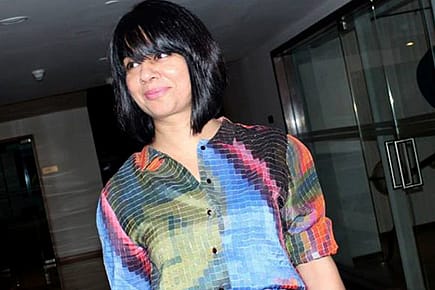Why Stories Matter

Designers must become part of the stories consumers tell of themselves
Designers must become part of the stories consumers tell of themselves
In that far off land of kaleidoscopic imagery, there were candy-coated flora and fauna, appliqud ferris wheels and carousels, techno-indulged Indian street art, sequinned animae. As you delved deeper into this whimsical wonderland, things got 'curiouser and curiouser'. "Oh my god, this embellishment is done with gold latex!" "The detailing is not from fabric, it is acrylic!" This was a pilgrimage to a world where 'nothing would be what it is, because everything would be what it isn't. And contrary wise, what is, it wouldn't be. And what it wouldn't be, it would. You see?"
It was my first encounter with the exuberantly imaginative world of Manish Arora. And like Alice in Wonderland, I was drawn, awestruck, childlike in my curiosity and euphoric at each discovery. I didn't buy the lehenga I had become so enamoured of (there was no occasion). But I did become a follower that day; I bought a dress instead. The very first Indian luxury piece I owned (much before I was exposed to the terms 'high fashion' or 'luxury') was a Rajesh Pratap shirt. The ascetism in the organised precision of the pleats and the understated sophistication of the crisp soft cotton evoked a Zen-like serenity and calm within me.
2026 New Year Issue
Essays by Shashi Tharoor, Sumana Roy, Ram Madhav, Swapan Dasgupta, Carlo Pizzati, Manjari Chaturvedi, TCA Raghavan, Vinita Dawra Nangia, Rami Niranjan Desai, Shylashri Shankar, Roderick Matthews, Suvir Saran
The contrasting natures of the designers' self-expression connect with the dichotomy of my own nature. And there lie the two sides of emotion in design: self-expression (of a designer) and connection (with an audience). In the modern culture of self-actualisation, everyone from professional coaches to spiritual gurus and pop psychologists insistently pose one question- "Who are you?", and almost always answer: "Who you are is a mix of beliefs, philosophies, ideas and experiences that shape the way you perceive the world."
What are you passionate about? What moves you? What does beauty mean to you? What incidents have shaped you? Your story, how only you see and feel the world, is your unique identity. How you express it is your message.
This idea is not limited to the scope of the design industry, as is evinced by Meghan M Biro, a globally recognised leader in talent strategy and a pioneer in building the business case for brand humanisation. In a contribution to Forbes.com, she declares, "I want to know you for the real you. I want to celebrate your personality, every nook and cranny. Real success has always been about knowing ourselves and staying true to that core. No one is perfect and no one is expected to be perfect, Steve Jobs was a freak. Authentic people are exciting, original and refreshing, the essential element of an exciting, vibrant workplace culture that leads to knockout performance." Perhaps that explains why the iPhone is a culture; Apple, a religion.
In his book Emotional Design, Donald Norman (former Apple Vice-President and design guru) says there are three levels at play in design and in how people process it–visceral, behavioural and reflective. The first refers to the look of a product, the aesthetics; the second to functionality and use; and the third to the message, how it makes one feel. Norman believes visceral people are strongly biased towards appearance, behavioural people towards function, and reflective people by brand name, by prestige and by the value a product gives their self-image.
A product may be good looking, even excellently engineered. But a brand starts a conversation; it tells a story, revels in its history, and connects with the 'now' of its audience. That is perhaps why networks like the Design and Emotion Society (established in 1999) 'facilitate dialogue among practitioners, researchers and industry, in order to integrate salient themes of emotional experience into the design profession'. Last year, Central Saint Martins in London hosted the 8th International Conference on Design and Emotion, 'to consider all aspects of the relationship between human experience and design.'
Simply put, the market has shifted. Terms like 'experiential marketing', 'user experience' and 'engagement' are new age buzz words. The audience is no longer a consumer with a 'need or interest'. She is a person with her/his own unique story to tell, with her/his own view of the world. What drives them, their aspirations, how they connect with a product comes from their own narrative of who they are, want to be and want to be seen as. Social media–Facebook, Twitter, Pinterest, Instagram–is rife with these stories. And perhaps a deeper connection is forged when you, a designer, help an audience discover who they are through your own story.
Connection is a two-way street; it is empathetic. But how empathetic it is depends on whether you, the designer, are content with the tribe that naturally veers towards you, or if you would like to reach out to those on the fringe in a language they understand, without sacrificing your own story.
